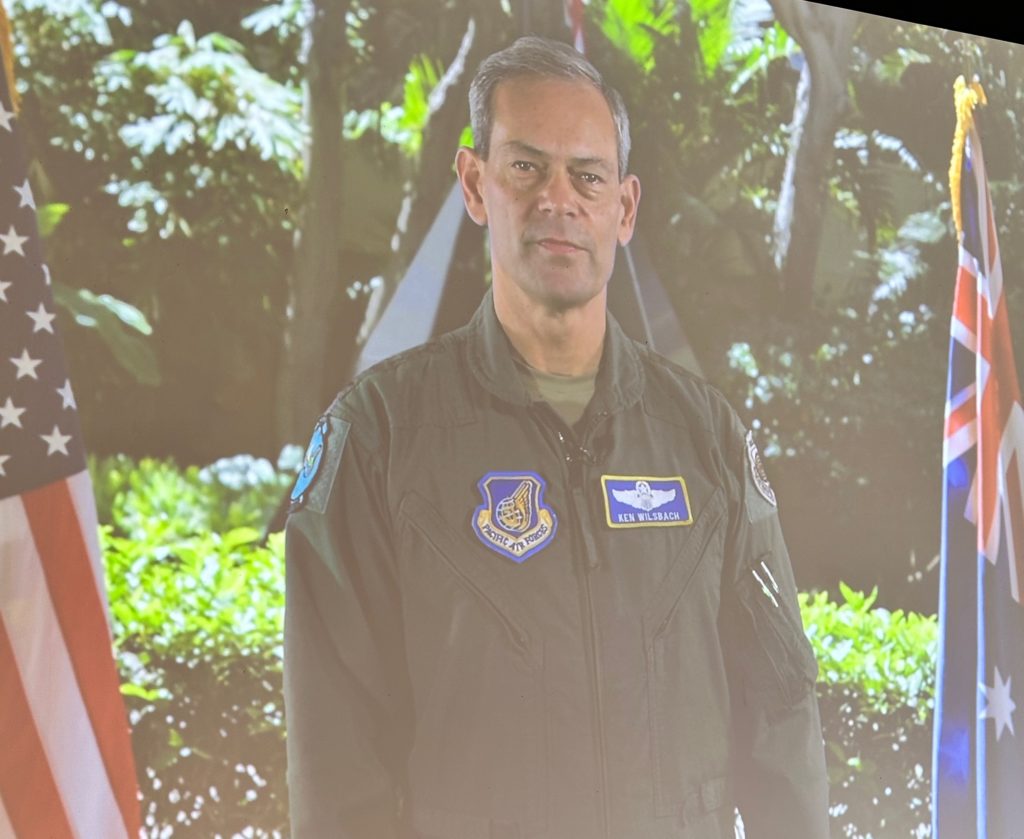By Robbin Laird
What is the relationship among multi-domain strike capabilities, warfighting and deterrence?
Multi-domain strike capabilities can only be done with foundational capabilities which enhance one’s viability in warfighting, and by being able to do so to enhance the adversary perceptions of their risk calculus. They need to believe that continuing a conflict is not worth the effort because they can not easily defeat you or intimidate you into capitulating to their demands.
But I would argue that strategically enabled multi-domain strike also requires political-military leadership which understands how to engage in war termination. And I would argue being able to do effective war termination rests on the adversary’s understanding of the robustness of our ability to continue a campaign. And this rests as well on a viable distributed force structure whose continued ability to punish an adversary suggests that war termination is in their interest as well as ours.
The presentations of General Wilsbach at the March and September Williams Foundation seminars provide several insights which suggest the relationships among multi-domain strike, war fighting and deterrence.

At the March seminar, the General argued the following: “The message of cost imposition is simple on its surface but has layers to consider. First and foremost, we all understand that no one wins if a conflict with China breaks out in the Indo-Pacific. That would be the worst-case scenario for every nation that calls the region home and is the last thing any of us want.
“So if an aggressor chooses to cross that line, they are already willing to bear considerable cost. That’s why the deterrence must be credible and convincing. You cannot leave room for doubt that the cost could be tolerable.
“To do that, you need to know who should receive that message. In authoritarian regimes, it must reach the few people at the top who hold all the decision- making authority. They may never bear the cost personally, but their power relies on the fear and submission of those who will….
“Denial, cost, resilience. Ideally, our deterrence actions should convey all three messages simultaneously. If I were an adversary planner, seeing capable forces across multiple, like- minded nations committed to action, able to deny my goals at overwhelming cost to me, and resilient enough to weather any of my attacks, that would keep me up at night. Integrated deterrence requires integration, readiness, and willingness, but it also needs one more thing—belief.”
In the September seminar, Wilsbach focused then on how multi-domain strike empowered deterrent capabilities. He underscored in his video presentation the following:
“There are many reasons to lean into multi domain operations, but I want to focus on one in particular, multi domain operations allow us to overwhelm and trip the adversary. Historically, warfare carries certain constants.
“One of the most important of these is gaining and maintaining the initiative. A combatant seizes the initiative, not through advanced technologies or superior training, but because they hit the adversary hard enough to knock them off balance, then hit them repeatedly to maintain an enduring advantage. pressure generated by synchronizing operations in time and space creates the opportunities where technology and training can make a difference.”
To be able to do multi-domain operations requires a warfighting ecosystem which reflects and embodies effective warfighting and deterrent capabilities, of the sort no adversary could miss. Of course, the failure to build such an ecosystem will mean that multi-domain strike will not be feasible or viable. The adversary understands this and targets force integration across a distributed battlespace, and works to enhance antagonisms among allies in a way to undercut the kind of integration which is both possible and necessary.
Wilsbach emphasized three key elements of the warfighting ecosystem which enables multi-domain strike and deterrence.
“The three angles of attack I’ve covered today, optimizing internal Air Force capabilities, joint integration, and allied and partner integration are areas we need to push. If we want to execute multi domain operations.
“All three will fail, however, if we don’t leverage our decisive angle, our airmen and aviators, our people are the best in the world, something our competitors recognize as they tried to copy our methods and attempt to hire our former members to train their forces….”
He concluded with a fundamental warning regarding the importance of shaping multi-domain strike capabilities throughout an integrated joint and coalition force as a core enabler of warfighting and deterrence.
“As I conclude allow me to make one more pass to stress the importance of multi-domain strike, Seizing and maintaining the initiative remains a key tenant of success in conflict. And you can only do that by hitting your adversary from every angle. The modern battlefield has one overarching rule–overwhelm or be overwhelmed.”


